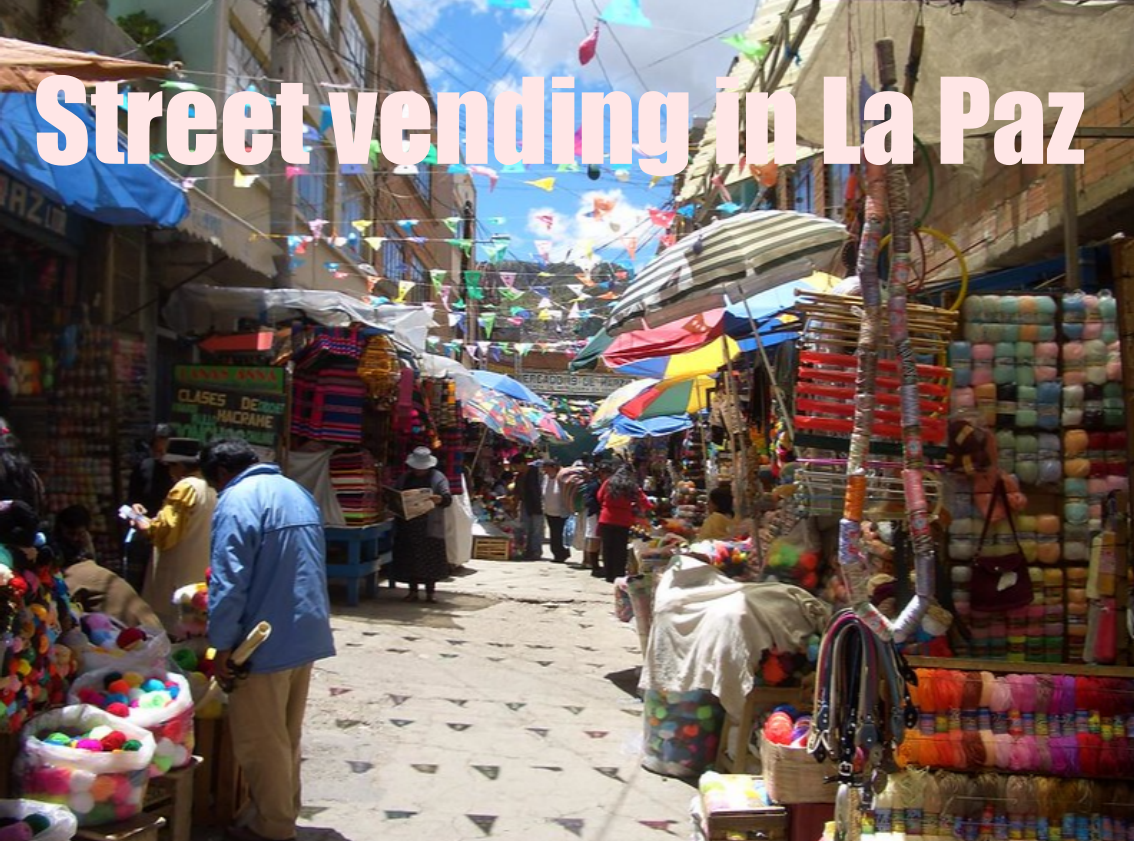
Main street in La Paz
I have to write down a few lines about street vending in Bolivia’s capital, Pa Paz. Street vendors are everywhere in South America, perhaps not so common in the parts of Argentina I passed. In Chile, you can find them in every slightly larger community, but nothing as tangible as in La Paz.
I had my hostel or backpackers hostel, CANOA in the immediate vicinity of the Witches Market, a tourist attraction like no other.
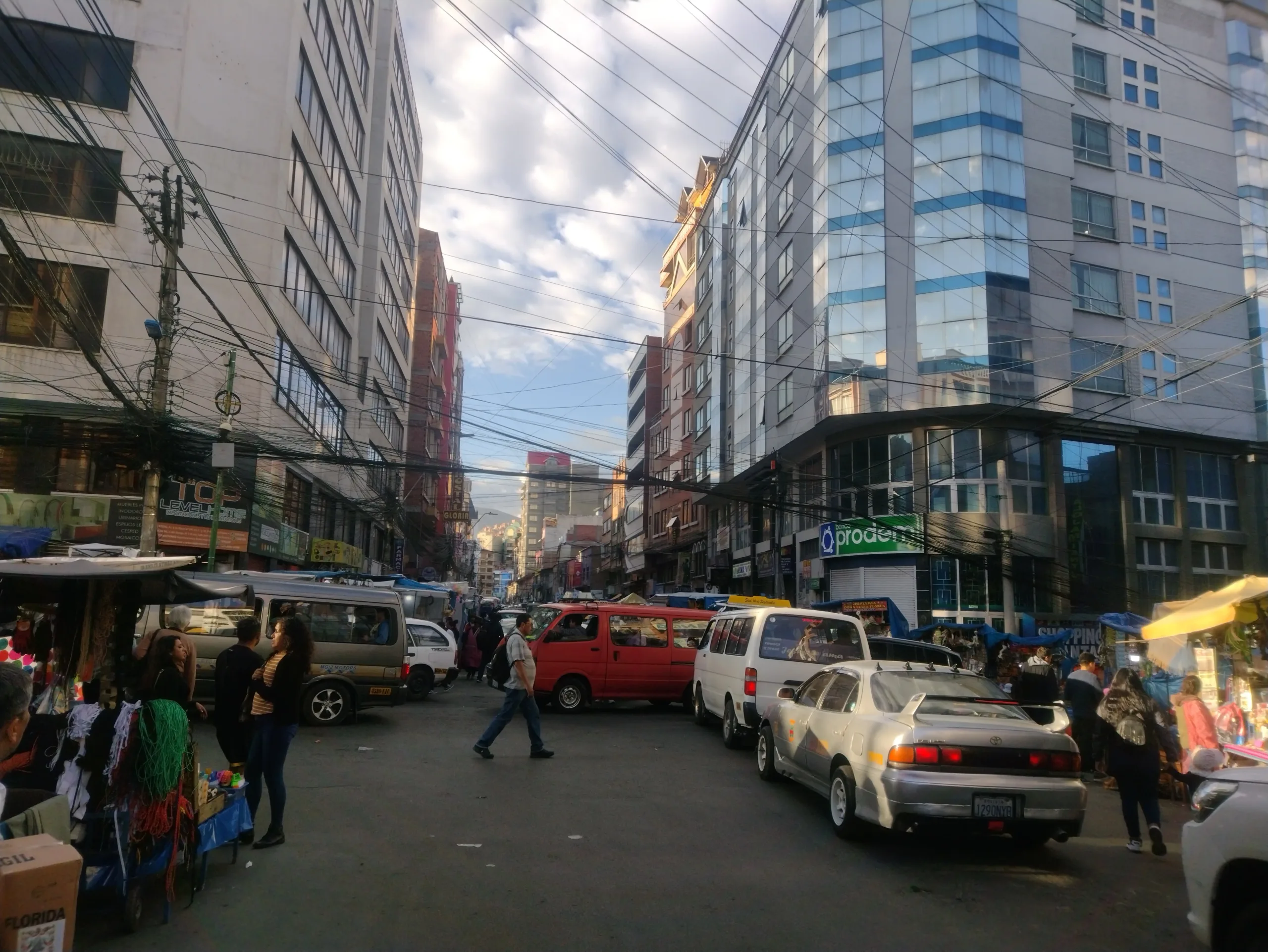
My hotel street
In this area, there are so many street vendors that it is difficult to get around and it is not helped by the fact that at the same time there is a traffic chaos that beats most people.
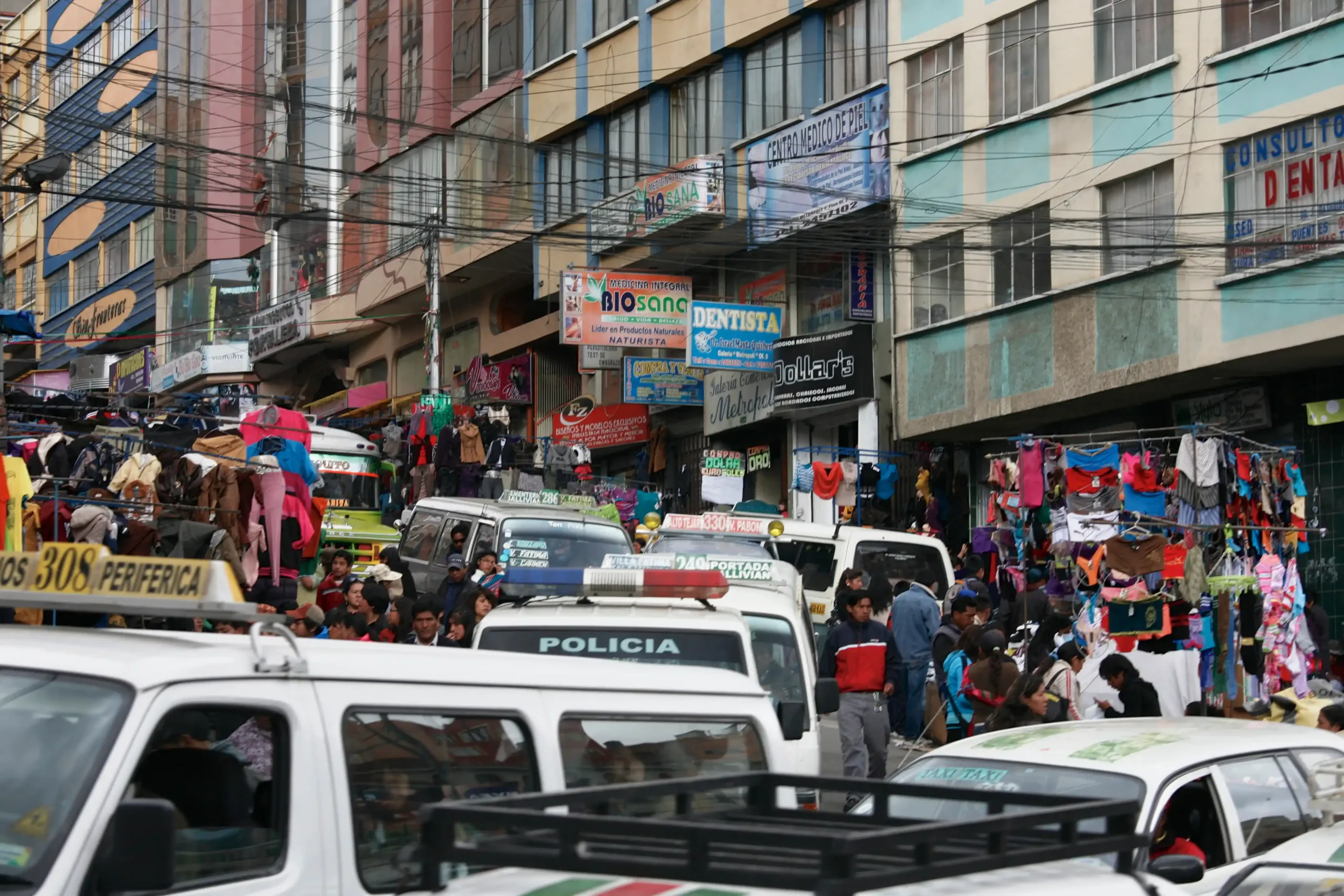
Traffic Chaos
This market is located on Calle Jiminez and Linares between Sagarnaga and Santa Cruz in, it’s impossible to miss the Witches’ Market of La Paz, Bolivia, which is found right in a lively tourist area. Dozens of vendors line the streets to sell a number of strange and fascinating products and the raw ingredients used in rituals to call on the spirits that populate the Aymara world.
When you walk on these streets, you are almost shocked by all the color around. You could almost believe that the rainbow got its origin from here.
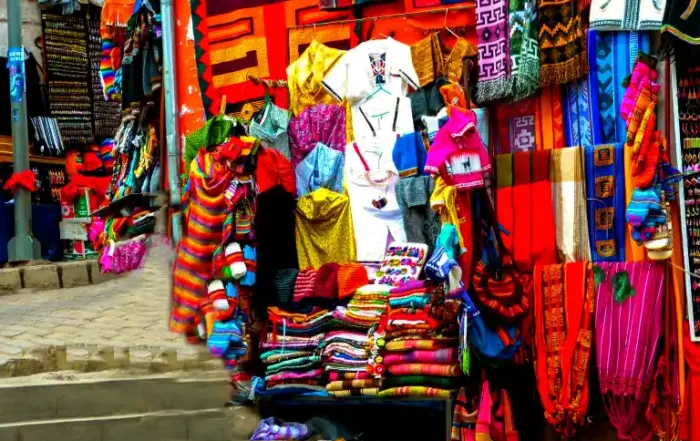
It was colorful fabrics everywhere
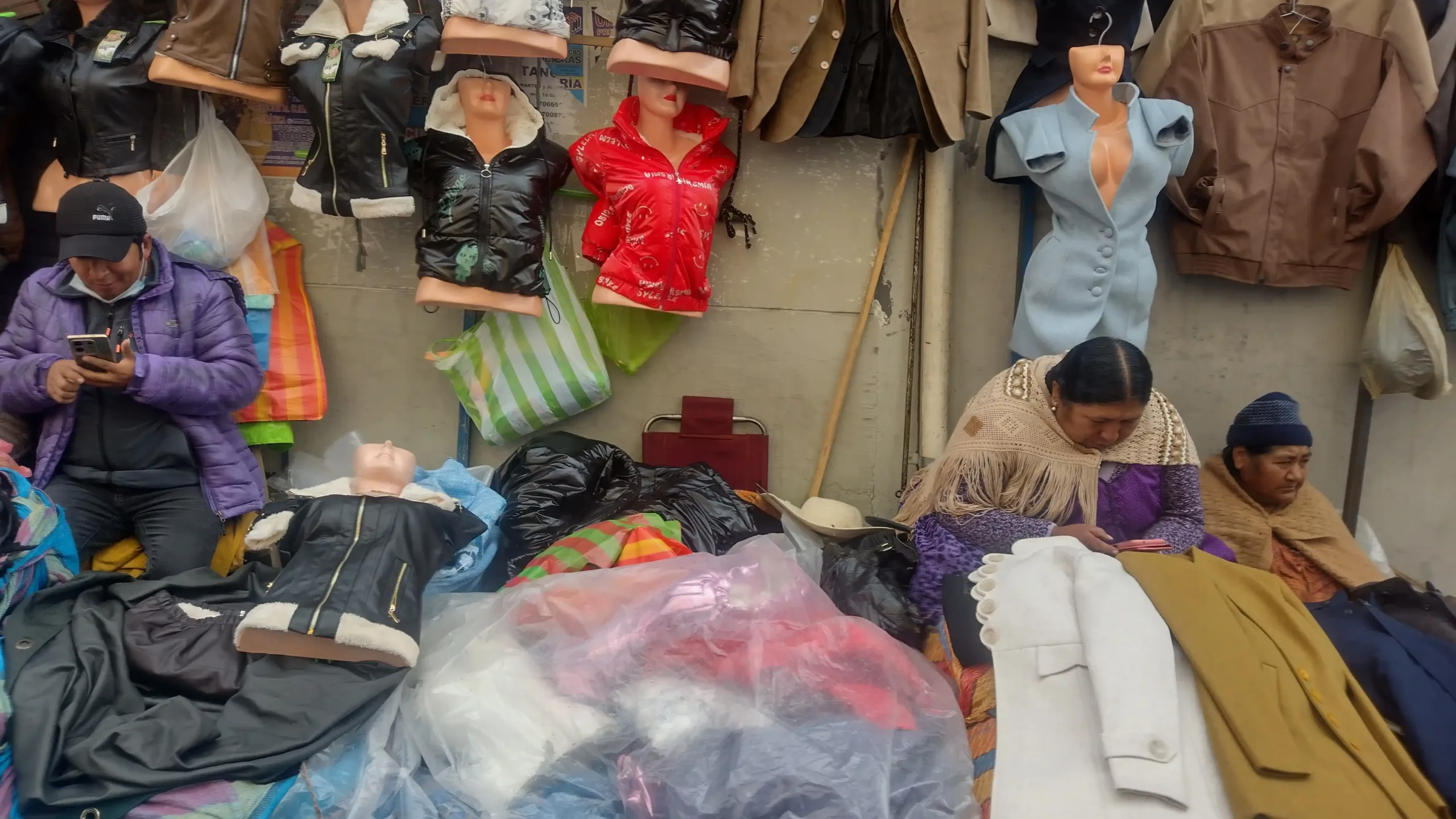
Hard work to a vendor in La Paz
They sell everything from beautiful handicrafts and hand-woven rugs, tablecloths, sweaters, hats to magazines, drinks, food and everything you could wish for. Much of what is sold is also cheap junk and unnecessary. Cheap replicas of branded products can also be found in this area.
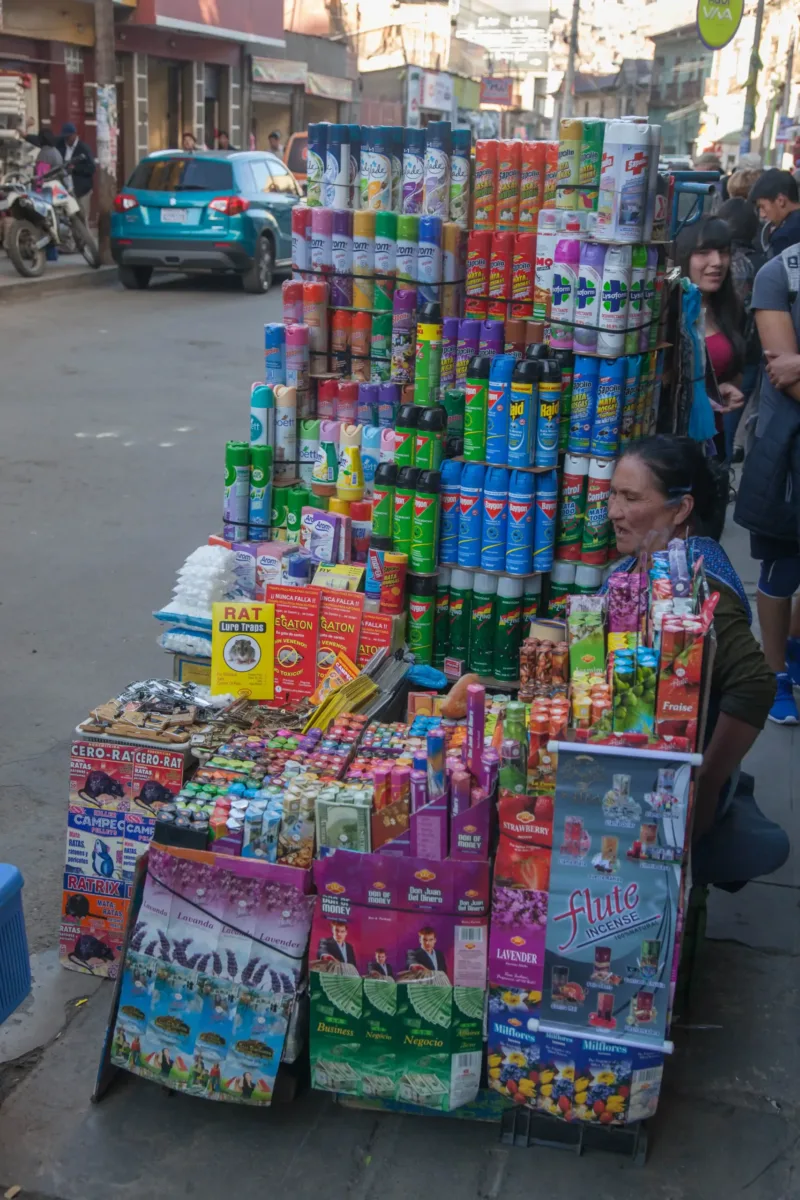
Everyting is for sales. This sales stand sells chemicals that perhaps keeps insects away

Yatiri women selling amulets and talismans perhaps to keep the ’evil away
The name ”Witch Market” comes from the fact that they also sell medicinal plants, such as coca leaves or khat, herbs but also something that resembled dried amphibians.Of course, there will also be dried llama foetuses to buy.
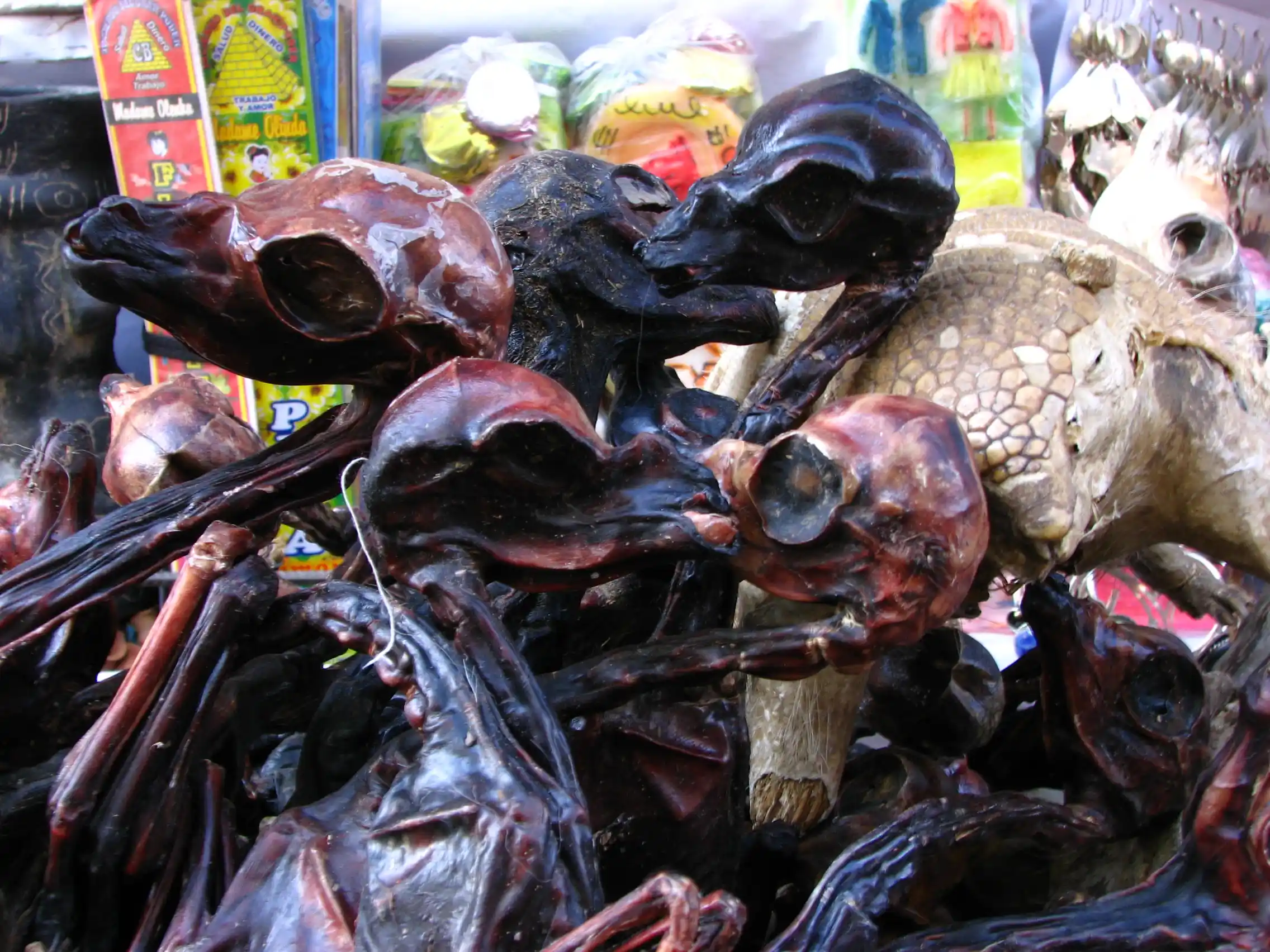
Dried llama foetus, I didn’t stay long at these stalls, felt unpleasant.
The dried llama fetuses are the most prominent product available at the market. These animals are fairly large and are used throughout the country, buried in the foundations of new buildings as an offering to the goddess Pachamama.
It is believed that the buried llama fetuses keep construction workers safe, but these are only used by poor Bolivians.
If you are a wealthy Bolivian you sacrifice a living llama to Pachamama instead.
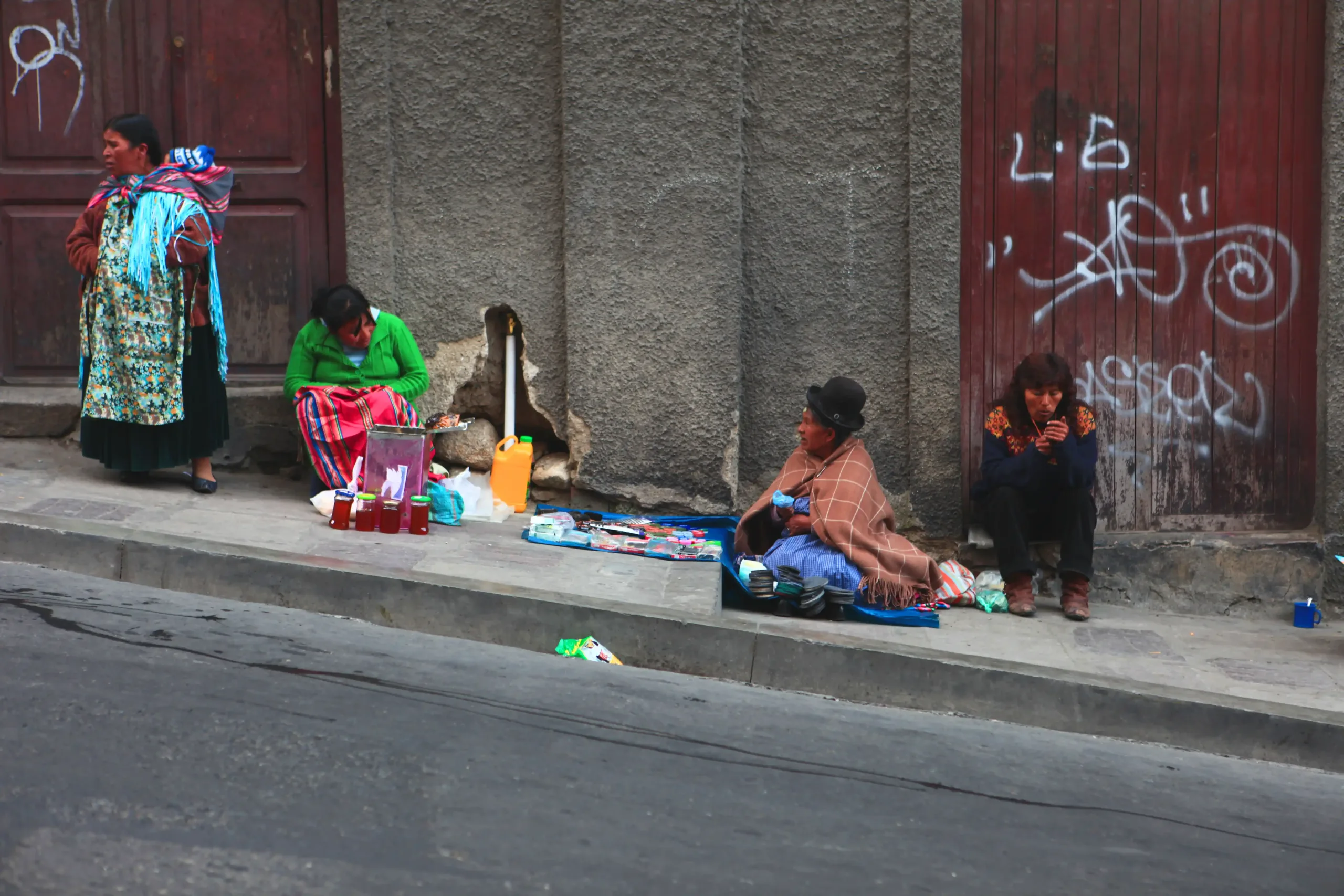
The people selling this are usually slightly older women in weird round, brown or black hats.
It can’t be easy being a street vendor in La Paz. Most people open up their colorful stalls around nine or ten o’clock in the morning and close late in the evenings.
The vast majority of street vendors are women, young and old, and they sit at their stalls and knit, sew or otherwise try to make something that can be sold. From me they got nothing.
Many of these have their small children with them and they play, laugh and cry and in between they sleep. The mothers usually eat at their stalls and hope that someone is willing to buy their produce. Without knowing, I don’t think these street-selling women have such a high level of education and they are probably struggling to make ends meet.
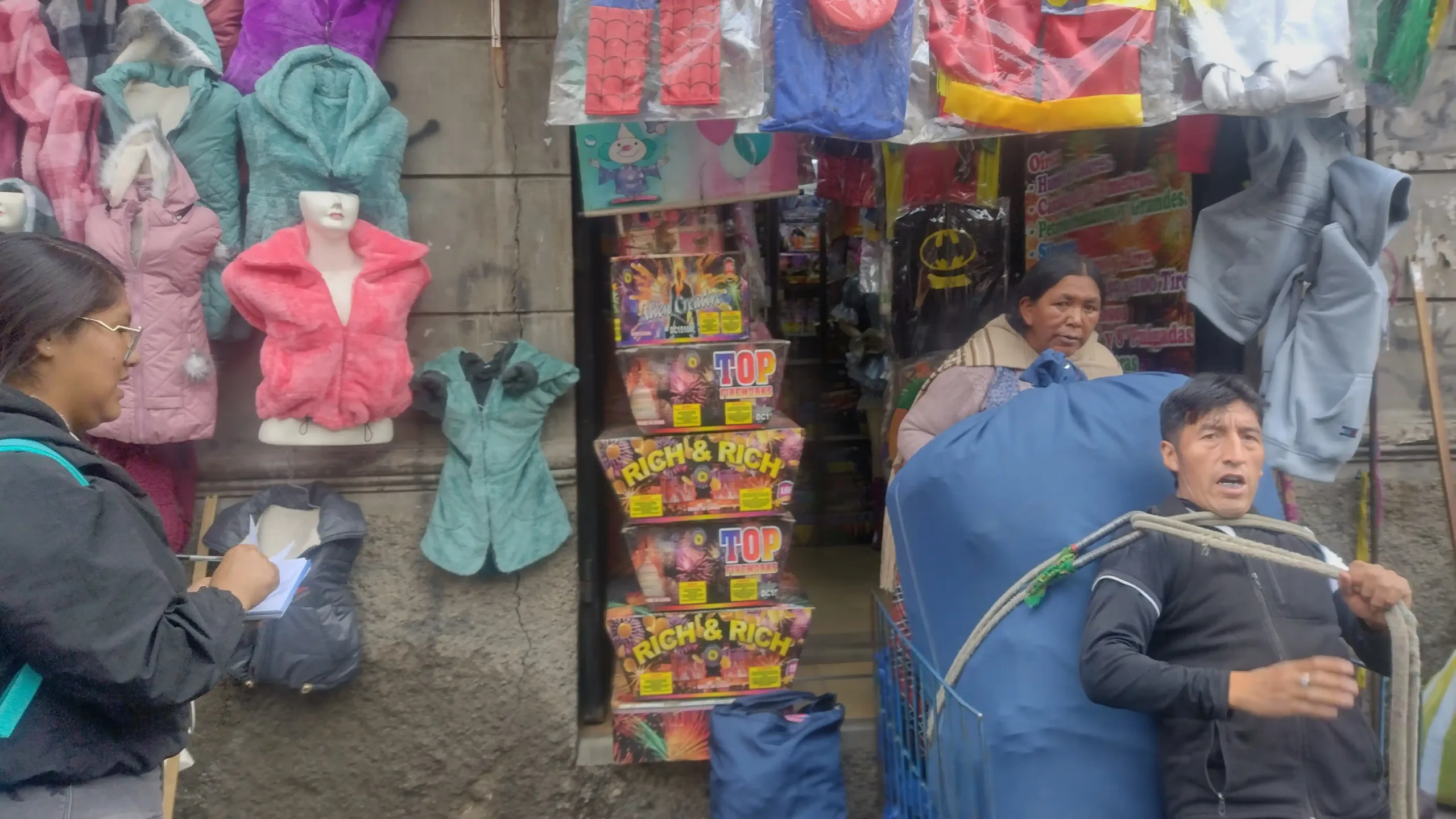
Strong man
Many times here in Sweden you hear complaining from those who are allowed to work longer than 8 hours a day. These women probably work 11-12 hours a day and even weekends
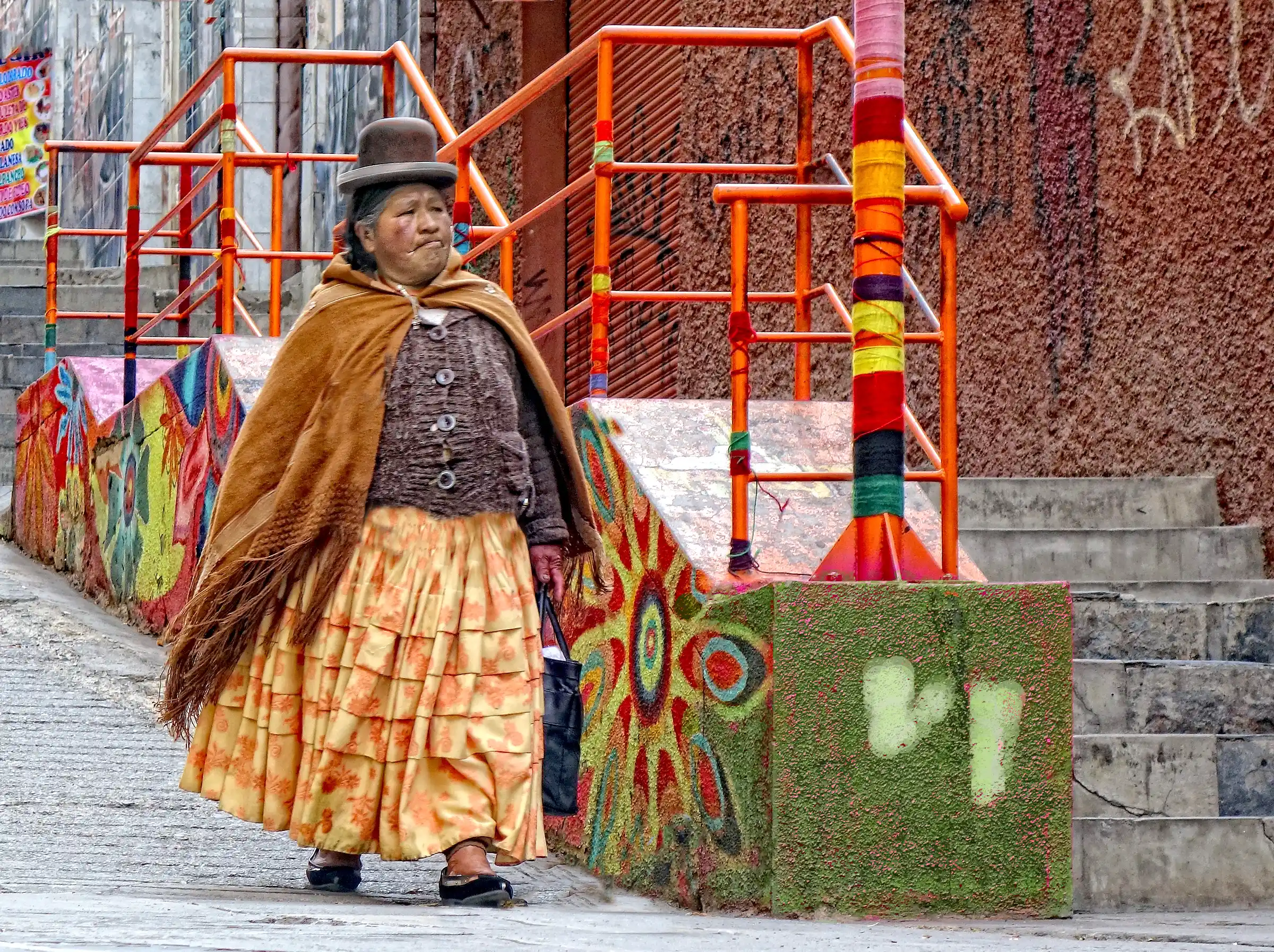
Determined Yatiri woman, maybe on her way home for dinner
Not many free squares meters, every meter is occupied. Streets are both narrow and steep. To be a driver in La Paz most be hell, especially for taxidrivers, rescue vehicles, ambulances and police cars. Traffic jam most of the time
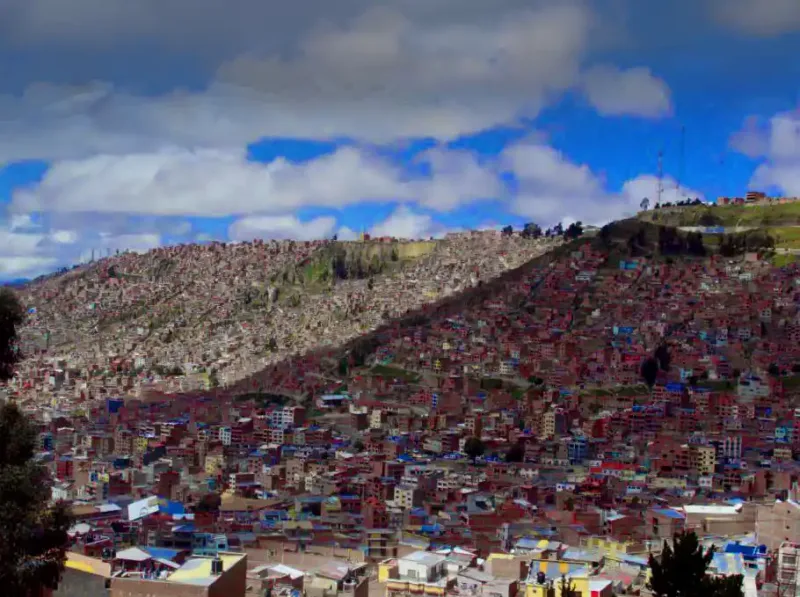
La Paz is located in the valley where river Choqueyapu River floats through approximately 3,600 meters above sea level and has large elevation differences. El Alto lies on the very top . Highest altitud abot 4000 m.a.s.l.
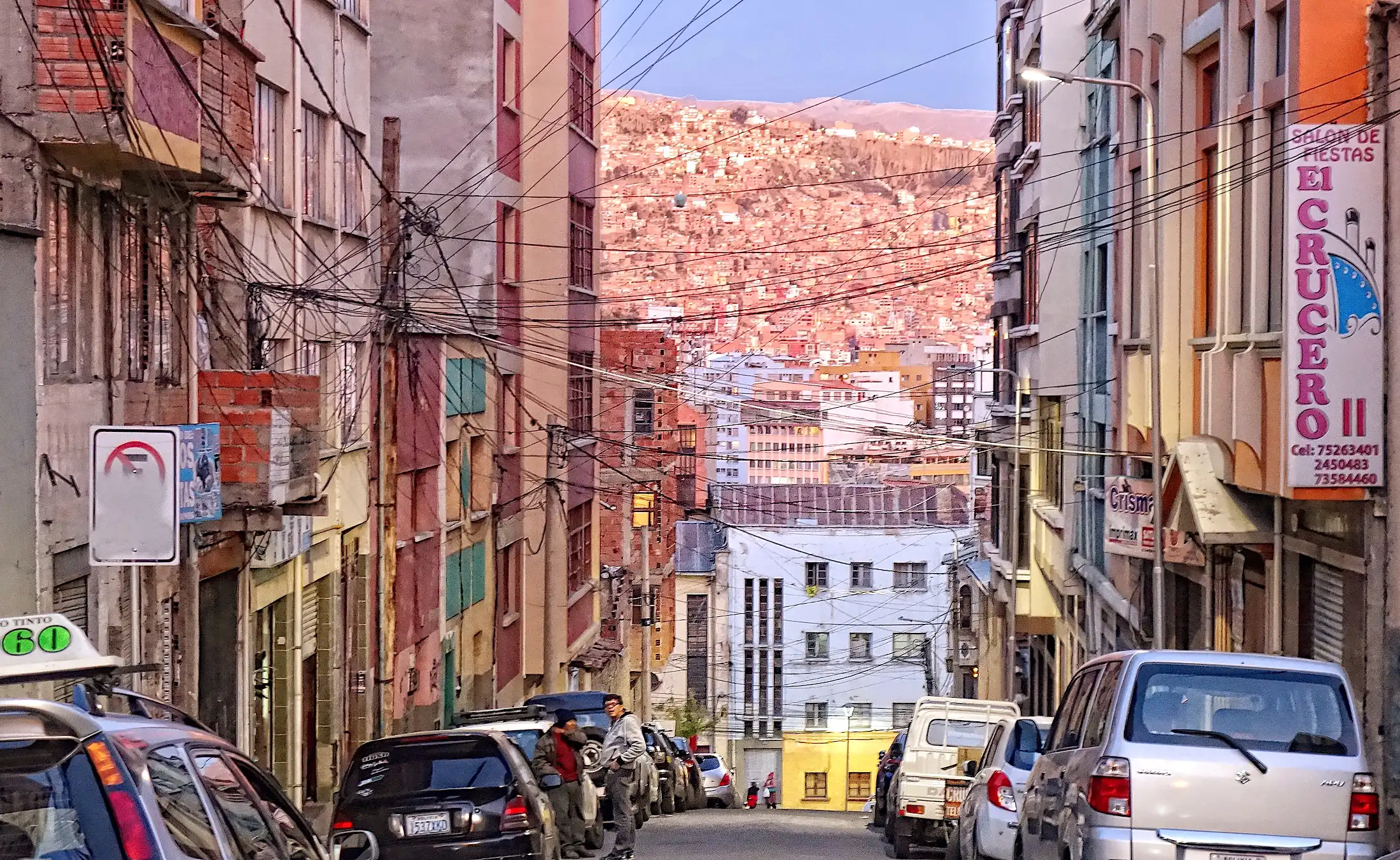
Narrow and steep streets, power lines hanging everywhere and in any way
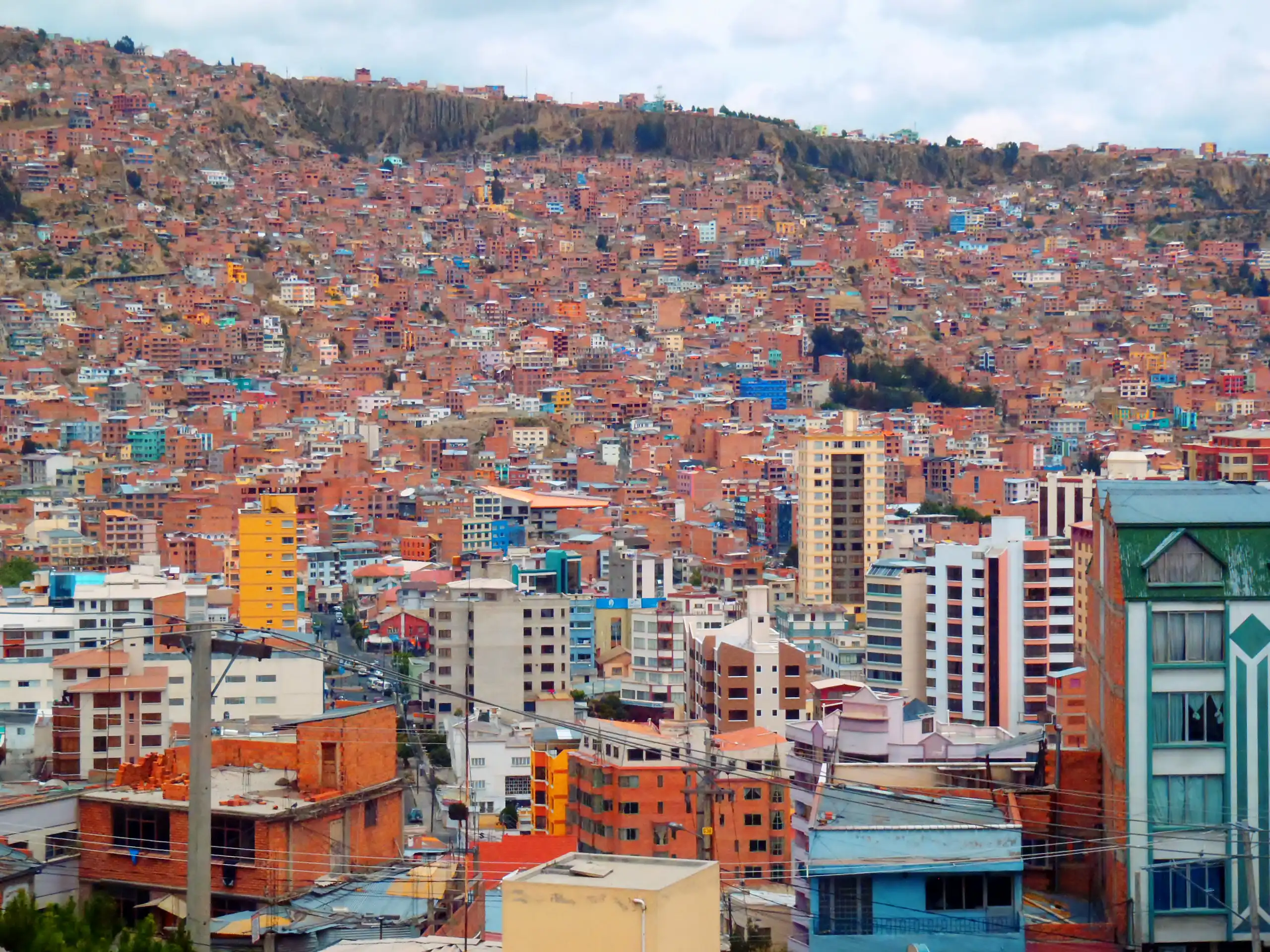
La Paz from hostel. El Alto at the very top

Traffic Chaos
Before I started this jourmey I been told that coca leaves can help agasinst altitude sickness. The feared altitude sickness didn’t happen this time. I remember my reaction in Tajikistan, 4560 m. a.s.l, so to be on the safe side, I went to a stall and bought coca leaves for 8 Bolivianos (BOB) (about 13 SEK).
It doesn’t taste good, a bit bitter and you have to chew it for a long time. The best way is to make tea from the leaves. Which I did!
The coca leaf in its natural form has nothing to do with cocaine. It is a mild stimulant, similar to coffee, which the people of the Andes have chewed or drunk as tea for thousands of years.
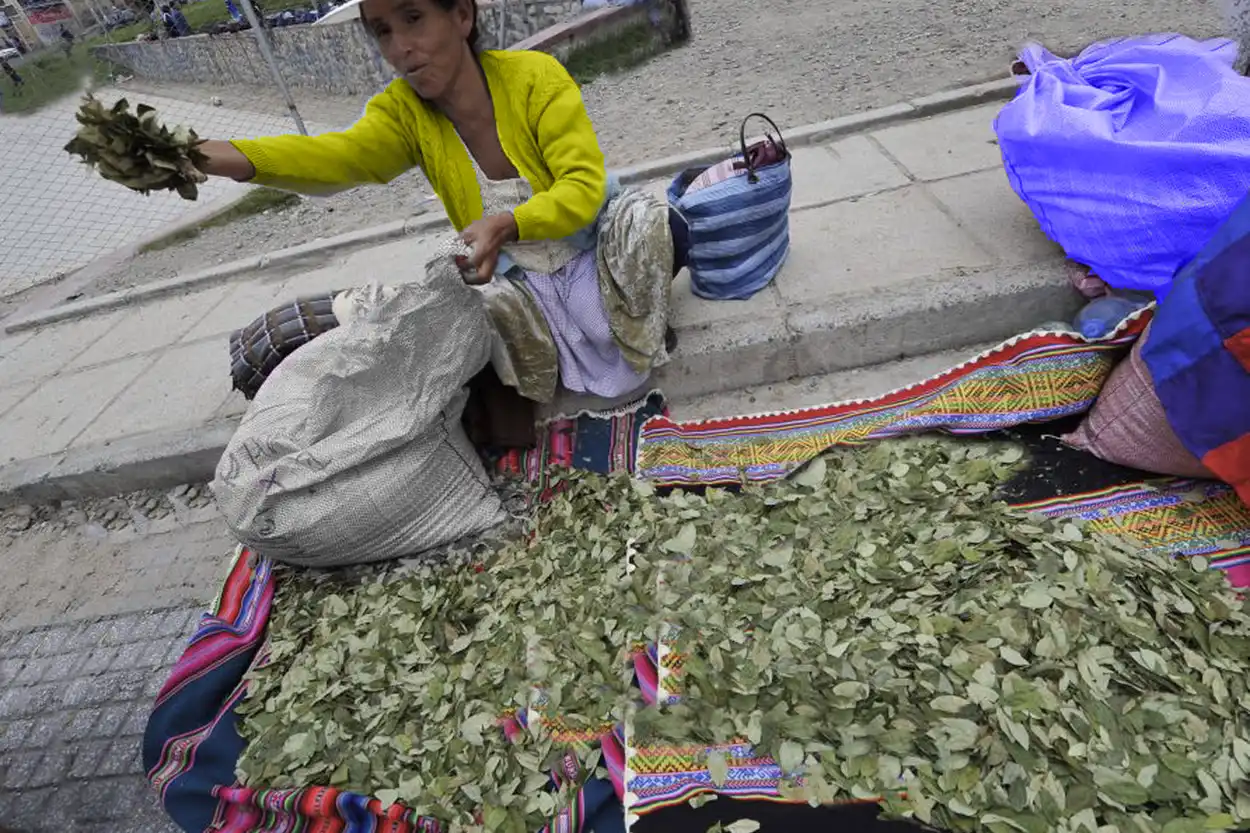
A woman sells coca leaves in La Paz, Bolivia, where the plant has traditionally had medicinal purposes.
But don’t take the leaves with you on the flight back to Europe, because coca is classified as a narcotic in the EU.
Keep fighting
P-G
// The Global Cyclist 1726
